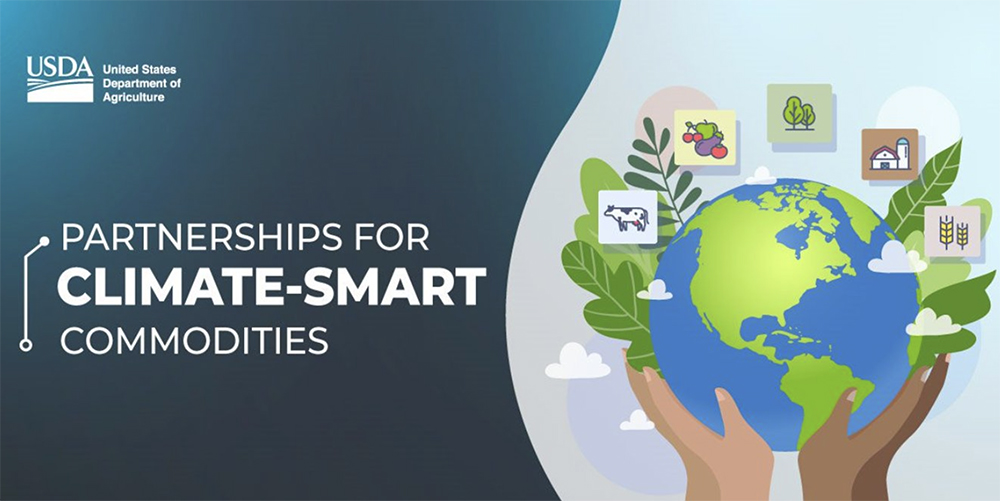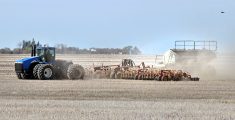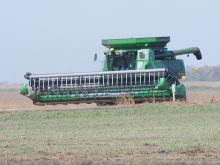On Sept. 12, U.S. Agriculture Secretary Tom Vilsack announced a US$3.5 billion project to help American farmers produce and market climate-friendly, or climate-smart, commodities.
For the moment, $2.8 billion will go toward 70 pilot projects under a program called Partnerships for Climate-Smart Commodities. Another $700 million will be invested in smaller projects at a later date.
In addition to the $2.8 billion, the private sector and non-profits will be investing about $1.4 billion into the partnership.
“(It’s a) really, really important day for American agriculture,” Vilsack said, noting that farmers, ranchers and the ag sector can be part of the solution for climate change.
Read Also

Saskatchewan puts crown land auction on hold
Auctions of Saskatchewan crown lease land are once again on hold.
“It’s going to allow agriculture to be front and centre, and trying to be a problem solver, not a problem maker…. It’s a tremendous opportunity… it’s going to give us a market advantage (around the globe).”
During a press call with media, Vilsack noted several times that the USDA effort to reduce greenhouse gas emissions is a collaborative effort with farmers and the agri-food industry.
“The other thing that (is) remarkable, (is) the tremendous nature of the partnerships,” Vilsack said. “You have major ag business companies working with major conservation and environmental groups…. With large commodity organizations across multiple states.”
For instance, the Iowa Soybean Association is leading a pilot called the Midwest Climate-Smart Commodity program.
“This project will build markets and provide funding to farmers via outcome-based contracts for the reduction and removal of carbon dioxide through the adoption of new climate-smart practices,” the USDA said.
The other partners in the Midwest Climate-Smart Commodity program, which is receiving $95 million from the USDA, include PepsiCo, Coca Cola, Target, Cargill and JBS.
Mary Robinson, president of the Canadian Federation of Agriculture, is impressed by the USDA’s partnership approach to the emission challenges in agriculture.
More communication and collaboration are needed to effectively tackle this issue in Canada, she added.
“The government of Canada didn’t consult with the ag community when they were formulating the 2030 fertilizer emission reduction target,” she said from her farm on Prince Edward Island.
In March, Agriculture Canada released a discussion document and began a consultation with the ag industry on a plan to achieve a 30 percent cut in nitrous oxide emissions from fertilizer by 2030.
Nitrous oxide is a potent greenhouse gas; one kilogram of N2O released to the atmosphere is equivalent to 300 kg of carbon dioxide.
The plan is voluntary and the consultation continued well into the summer. But many producers and farm groups remain skeptical or hostile toward the concept. Some view it as a threat to crop yields, profitability and their livelihood.
A recent survey to gauge support for the fertilizer emissions plan found that 72 percent of farmers on the Prairies strongly disagree with the target and only eight percent strongly support it.
Major commodity organizations, like the Canola Council of Canada, have also criticized the 30 percent reduction target.
The canola council and Fertilizer Canada released a report saying they support the government’s goal of cutting greenhouse gas emissions, but Canada can’t sacrifice food production and yield gains to achieve an arbitrary target. The report said there is a middle ground where crops yields continue to increase and nitrous oxide emissions from fertilizer are reduced 14 percent, by 2030.
Jim Everson, canola council president, wouldn’t compare the USDA approach to ag emissions with the Canadian government’s approach.
But one comment from Vilsack caught his attention.
“He was saying (this) puts the United States in a leadership position, on the sustainability agenda, globally,” Everson. “I wouldn’t necessarily agree with that. But it points out that there’s a marketplace advantage to being positioned that way…. Or at least, he sees it that way.”
Everson added the canola council is a partner with Agriculture Canada on agronomic research, canola science, market access and cutting GHG emissions from farming. But sometimes partners disagree.
“What this (Fertilizer Canada and canola council) report is saying, it’s really extremely difficult to hit the 30 percent and still support growers who have to take the risks of adopting these (emission reduction) practices,” he said. “We think a realistic number would be that 14 percent, but it’s not a target.”
Robinson said goals or targets for GHG reductions from agriculture should be ambitious. But it’s difficult to execute a plan with a top-down approach.
“We need to sit down, together, because we (farmers) are the experts on the actual implementation of all of this technology and approaches and everything else they (government) want to do,” she said.
“What we’ve made clear to Madame (Marie-Claude) Bibeau (federal agriculture minister)… that a working group is needed…. We need to see that producers and stakeholders need to have a working group with the department of agriculture (and) ECCC (Environment and Climate Change Canada).”
The Canadian Federation of Agriculture has asked for a working group but hasn’t received a response from Bibeau or Ag Canada officials.
“But we’re pretty confident we’re going to get to the point where a partnership-based approach… is going to come together,” Robinson said, adding that hardline opposition to GHG reductions and government ambitions is not a winning strategy for farmers.
“We can decide we’re going to dig our feet in and say we’re against it. Or we can say we’re going to be at the table and make this the best we can for producers. Because it’s coming at us, one way or another.”
















